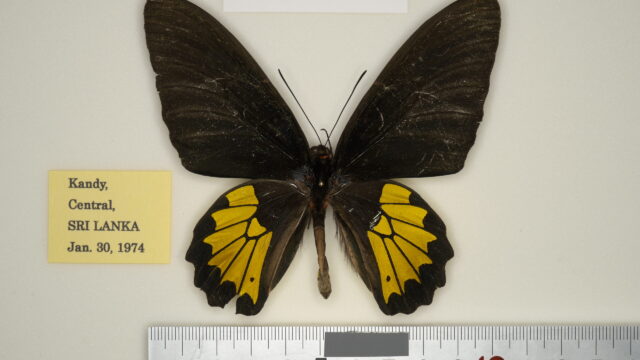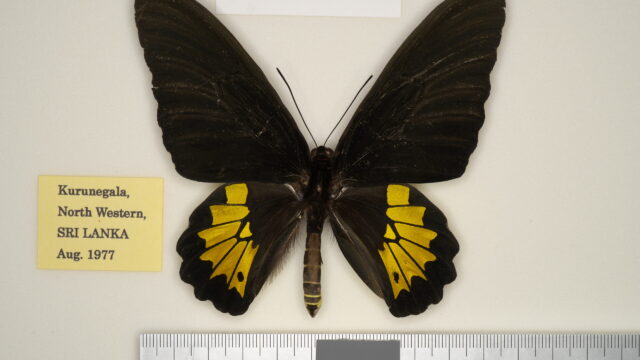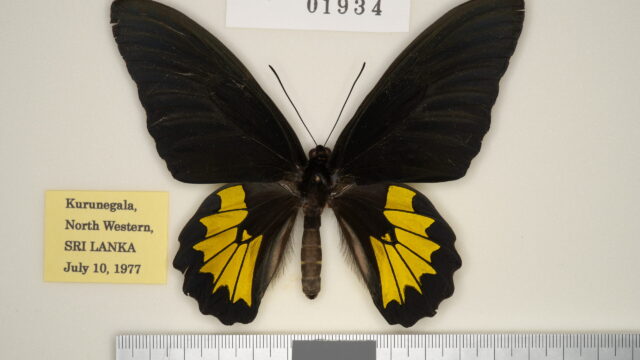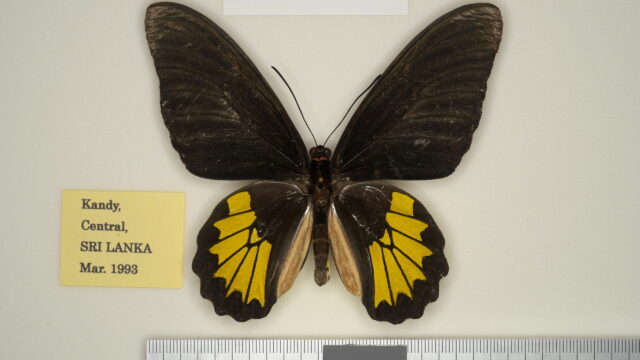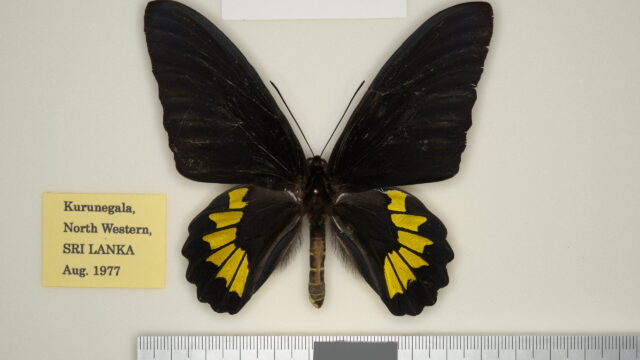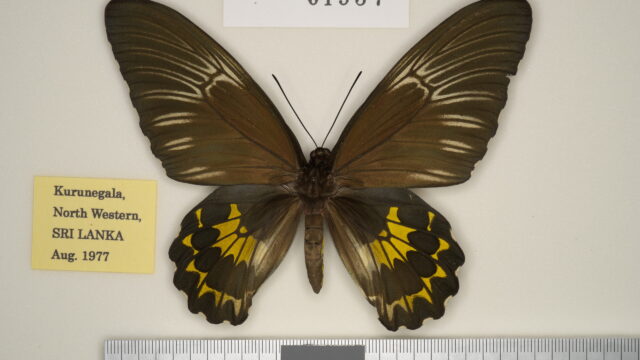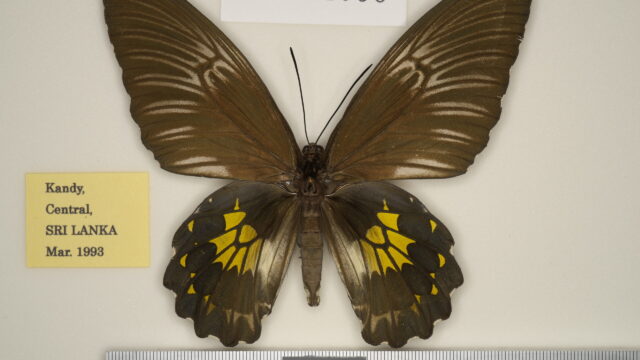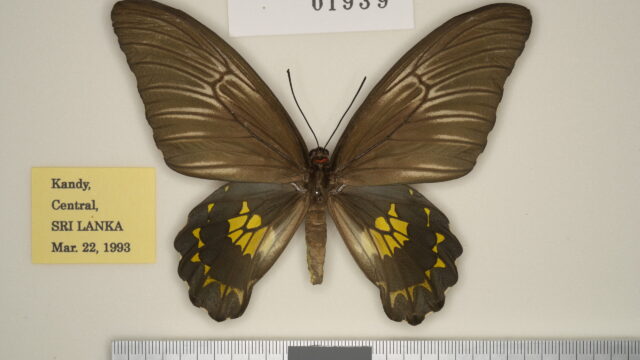5) Sp. darsius (Gray, 1853)3) [♂, ♀]
(Distribution) [DCD 24], [Map 96]
SRI LANKA (=Ceylon) [NP] Puliyankulam, [CP] Sigiriya, Kandy, Nuwara Eliya, Hakgala, [NWH] Kurunegala, [Uva P] Bibile, Kataragama Peak, [EP] Lahugala Kitulana Nat. Park, [WP] Colombo, Labugama, Ingiriya, [Sabaragamuwa P] Belihul Oya, [SP] Sinharaja Forest Reserve, Deniyaya, Telijjawila, Matara.
(Vertical distribution)
0 – 2, 000 m. a. s. l.
(Episodes of discovery and original description)
It was first described by Doubleday (1846) on the basis of a single ♂, which he considered identical to amphimedon (= haliphron) from Celebes. Gray (1853) subsequently redescribed it as a new species of Papilio based on ♂ and ♀ from Ceylon.
(Characteristics)
Endemic to Sri Lanka, mostly found in Central and Southern area. (Populations decline in the north area and at altitudes above 1,000 m). Haliphron-Species-Group is distributed in the Greater Sunda Islands, Lesser Sunda Islands and Northern Maluku, but only this species occurs an island in the distant Indian Ocean. This is very interesting fact.
(Spotted pattern)
♂: Individual differences in the size of golden spots on HW of ♂are characteristic of this species. FW is black with deep dark green sheen. HW have semi-translucent golden patches in each space, but it is narrow due to wide black marginal border. Some individuals lack the golden cell-spot or have small black discal spots. Reddish hair tufts are present on the neck and lateral thorax. The upper surface of abdomen is blackish brown, and each segment bordered by yellow. The under surface is yellow.
♀: Individual variation is almost non-existent. FW dark brown with a dark green tinge. Grayish white vein-stripes extend from the apex of the cell to the subapical, submarginal and inner marginal areas. HW ground color is blackish brown and its spread from the base of the wing is just before the tip of the cell, leaving a small cell-spot. The black discal spots are almost half of spaces and fuse together to form a band. Yellow pale band is not so large, and outside of space 1b is white. Red hair tufts are present on the neck and sides of the thorax. Abdominal surface is dark brown, and underside is yellow.
(Variation)
♂-f. isis (Ehrmann, 1925)2): [Aberrant HW pattern] On the HW, the golden patch is larger occupying about 1/2 of cell. The black marginal border is narrower.
♂-f. cambyses (Ehrmann, 1904)1): [Aberrant HW patten] The golden patch of HW have a more delicate yellow color, and in each of it there is a small, black, oval spot 4 mm. in diameter submarginally.
♂-f. clementinae Sala, 19926): [Aberrant HW pattern] The golden patch on HW reduced, not touching the cell; cell-spot absent.
♀-f. melanie Rumbucher & Schäffler, 20045): [Aberrant HW pattern] Reduced golden patch on HW, cell-spot absent. (➡staudingeri iris )
♀-f. donae Sala, 19926): [Aberrant HW pattern] The golden patch on HW is enlarged because dark discal spots are small and isolated, above all in the wing spaces 4 and 5.
(Larval foodplant)
Aristolochia tagala, Aristolochia indica.4)
